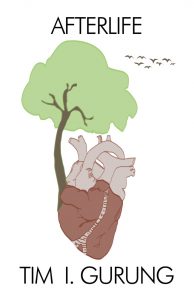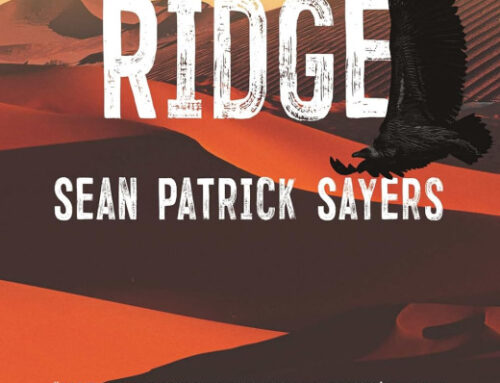 Afterlife by Tim Gurung follows Enos Bronte as he travels through the hereafter meeting many challenges along the way. He battles loneliness, isolation, barren landscapes, trapped souls, and other dark and disturbing visions as he attempts to navigate this difficult wilderness. Ultimately, the journey is worth it. Enos hasn’t been trapped in hell, he must fight his way through this otherwordly landscape to reach safety and redemption.
Afterlife by Tim Gurung follows Enos Bronte as he travels through the hereafter meeting many challenges along the way. He battles loneliness, isolation, barren landscapes, trapped souls, and other dark and disturbing visions as he attempts to navigate this difficult wilderness. Ultimately, the journey is worth it. Enos hasn’t been trapped in hell, he must fight his way through this otherwordly landscape to reach safety and redemption.
This is not a traditional view of the afterlife, and it’s more a reflection of Eastern mysticism than Western depictions of heaven and hell. At the same time, Gurung covers most of the bases present in other depictions of the afterlife (purgatory, a light at the end of a tunnel, etc.). Yet, fortunately, the book doesn’t proselytize. The book reads like one man’s personal journey, not a fundamentalist account stating: “This is what happens.” Gurung covers the standard motifs, but the book never devolves into being a cookie cutter vision into life after death.
There’s a dreamlike quality to much of Gurung’s tale of the afterlife. The narrative is written in a stream of consciousness style, with each paragraph on the man’s journey reading like a kind of prose poem. There’s a lot to digest here. Afterlife isn’t a traditional novel, or like a non-fiction account of the afterlife. It reads more like an exploration of consciousness. And if we really do survive after death, this dreamlike reflection is apt.
What makes the book particularly effective is that one can read the novel as a parable. It doesn’t need to be read as a book about the afterlife at all, and could be read as an abstract tale of a man journeying towards an ultimate destination. In this way, the book does not have to be read by the devoutly religious. It’s not a “Heaven is for Real” type book. It’s more Kafkaesque than that, more in tone with The Castle with a central character trying to succeed against insurmountable odds. The novel doesn’t, however, have Kafka’s cynicism, and the ending is refreshing after so much struggle.
Some readers may find Gurung’s narrative style somewhat dense. There’s hardly any dialogue in the entire novel. The “dialogue” is Enos’ dialogue within himself, as he questions everything around him. Once you settle into this dynamic, the effect is cumulative. The dreamlike narrative becomes dreamlike to read, and may even affect how you look at everyday life when you set down the book. This could have been a problem – as most say, there’s nothing less interesting than hearing someone else’s dream – but the novel doesn’t fall into that trap, even with its stream of consciousness delivery. Gurung’s vision is so fully-realized that his dream has a living, breathing reality.
Overall, Afterlife is a tough read, as Enos has to contend with so many trials and tribulations, but the ultimate effect is very rewarding. You’ll feel Enos’ redemption and relief along with him. It’s a strange and complex novel, to be sure, but then Gurung is answering very big questions about life and death.
Note: proceeds from the sale of this novel go to support ISSLCARE, an orphanage in Nepal.
Links
Author Site
Amazon
Goodreads
Review Overview
Design
Content
Editing
Get an Editorial Review | Get Amazon Sales & Reviews | Get Edited | Get Beta Readers | Enter the SPR Book Awards | Other Marketing Services























Leave A Comment